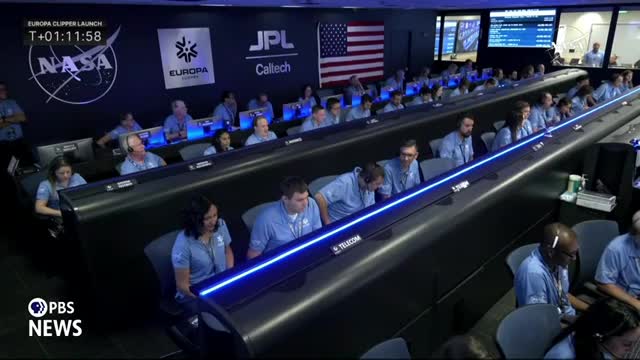Europa Clipper spacecraft successfully launches on historic mission
This article was created by AI summarizing key points discussed. AI makes mistakes, so for full details and context, please refer to the video of the full meeting. Please report any errors so we can fix them. Report an error »

In a momentous achievement for space exploration, NASA's Europa Clipper spacecraft successfully separated from the Falcon Heavy rocket during its launch, marking a significant milestone in the mission to explore Jupiter's moon, Europa. The launch, which took place under optimal weather conditions, was celebrated by the teams involved, who have dedicated years of work to reach this point.
The spacecraft's separation was confirmed shortly after launch, with mission control receiving a signal indicating that the spacecraft is functioning as expected. This initial telemetry data is crucial, as it allows engineers to assess the health of the spacecraft and ensure that all systems are operational before it embarks on its journey to Jupiter.
Tim Larson, deputy project manager for Europa Clipper, expressed the collective excitement of the team, highlighting the extensive collaboration that went into the mission. \"This is a culmination of the work of thousands of people representing millions of work hours,\" he stated, emphasizing the historical significance of the launch.
Looking ahead, the Europa Clipper team faces a busy schedule as they conduct a series of checks on the spacecraft's systems and prepare for key deployments, including the boom for magnetometers and antennas for radar instruments. These steps are essential for the spacecraft to gather data on Europa's subsurface ocean, which could provide insights into the potential for life beyond Earth.
The successful launch comes on the heels of a recent hurricane that impacted many team members, yet they rallied together to ensure the mission proceeded smoothly. Denton Gibson from NASA's Launch Services Program praised the teamwork that made the launch possible, underscoring the resilience and dedication of the staff involved.
As the Europa Clipper begins its journey, anticipation builds for the scientific discoveries that await. The mission is expected to enhance our understanding of not only Europa but also the broader implications for life in the universe. The spacecraft is set to arrive at its destination in approximately five and a half years, promising a wealth of knowledge that could reshape our understanding of planetary science.
The spacecraft's separation was confirmed shortly after launch, with mission control receiving a signal indicating that the spacecraft is functioning as expected. This initial telemetry data is crucial, as it allows engineers to assess the health of the spacecraft and ensure that all systems are operational before it embarks on its journey to Jupiter.
Tim Larson, deputy project manager for Europa Clipper, expressed the collective excitement of the team, highlighting the extensive collaboration that went into the mission. \"This is a culmination of the work of thousands of people representing millions of work hours,\" he stated, emphasizing the historical significance of the launch.
Looking ahead, the Europa Clipper team faces a busy schedule as they conduct a series of checks on the spacecraft's systems and prepare for key deployments, including the boom for magnetometers and antennas for radar instruments. These steps are essential for the spacecraft to gather data on Europa's subsurface ocean, which could provide insights into the potential for life beyond Earth.
The successful launch comes on the heels of a recent hurricane that impacted many team members, yet they rallied together to ensure the mission proceeded smoothly. Denton Gibson from NASA's Launch Services Program praised the teamwork that made the launch possible, underscoring the resilience and dedication of the staff involved.
As the Europa Clipper begins its journey, anticipation builds for the scientific discoveries that await. The mission is expected to enhance our understanding of not only Europa but also the broader implications for life in the universe. The spacecraft is set to arrive at its destination in approximately five and a half years, promising a wealth of knowledge that could reshape our understanding of planetary science.
View full meeting
This article is based on a recent meeting—watch the full video and explore the complete transcript for deeper insights into the discussion.
View full meeting